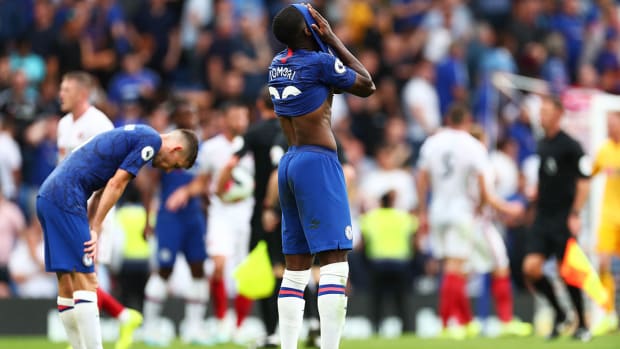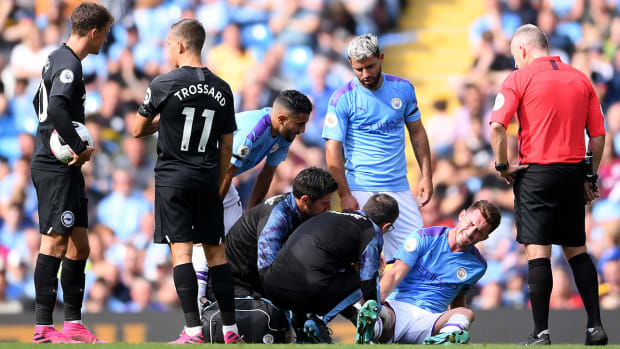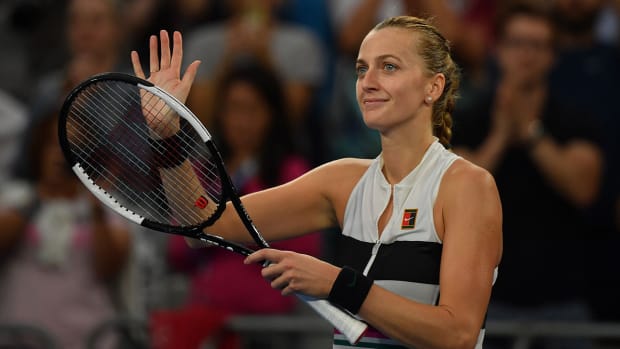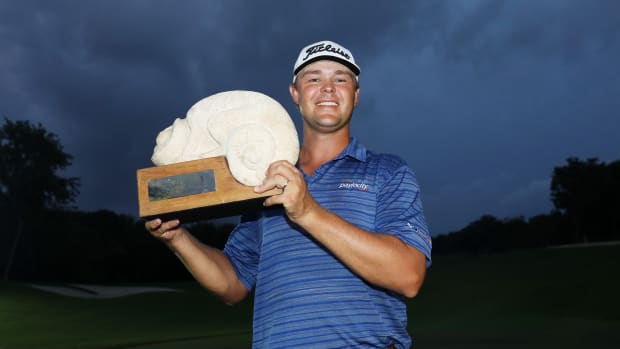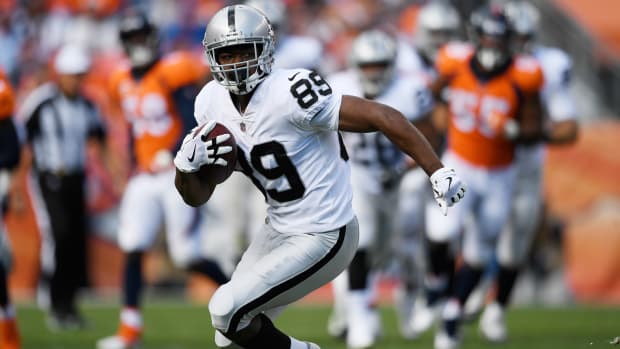'Foiling' America's Cup due to set sail Saturday in Bermuda
There's a British knight, a mob of Aussies even though there's no Australian team, a crew of New Zealanders looking for redemption and the now-familiar billionaire set.
Toss in a fleet of fast, space-age catamarans sailing on Bermuda's Great Sound and the 35th America's Cup will be like none before it.
During the next 2 1/2 weeks, five challengers will vie for the right to face two-time defending champion Oracle Team USA in the first-to-seven America's Cup match starting June 17.
The qualifiers had been scheduled to begin Friday with the opening races of Round Robin 1, but they were pushed back to Saturday because of predicted strong winds deemed unsafe for the 50-foot, wing-sailed catamarans.
The opening matchups will be Oracle Team USA against Groupama Team France; Sweden's Artemis Racing against SoftBank Team Japan; France versus Emirates Team New Zealand, the hard-luck loser to Oracle in 2013; and Artemis against Britain's Land Rover BAR, which is by Sir Ben Ainslie.
''I think you'll see the fastest boats on water, the best sailors, the best athletes in the world and it'll be incredible,'' Oracle Team USA skipper Jimmy Spithill, an Australian, said Thursday. ''There's no doubt in my mind this will be a defining chapter in the America's Cup and will be known as the foiling America's Cup.''
Ah yes, foiling. It's all the rage in sailing and nowhere does it get more buzz than in the America's Cup. When the boats hit a certain speed, they rise up on hydrofoils and speed across the tops of the waves. When the boats are foiling, they're riding only on the leeward daggerboard and both rudders. Daggerboards on both hulls are in the water for a few moments during tacks and gybes. The boats are capable of reaching almost 50 mph.
Here are some things to watch for as the 35th America's Cup is sailed at the northern tip of the Bermuda Triangle:
THE FORMAT
In a break from tradition, the defender, Oracle, will sail against the challengers in the two round robins. One challenger will be eliminated and the remaining teams will sail their semifinals and finals while Oracle trains on its own. If the winner of the qualifiers is Oracle or a challenger that advances to the match, that team will start the match with a one-point bonus.
''We're sailing this to win,'' Spithill said. ''Clearly there is something here worth fighting for.''
THE VENUE
In another departure from tradition, the trustee of the America's Cup, San Francisco's Golden Gate Yacht Club, put the venue up for bid. San Francisco, which provided a spectacular backdrop in 2013, fell out early. Bermuda, a British overseas territory, won with a bid of $37 million in infrastructure and services over three years, plus $40 million in various sponsorship guarantees.
AUSSIE AUSSIE AUSSIE, OI OI OI
Nationality rules have long since been dumped, although the British, French and New Zealand teams have strong national representation. Australia doesn't have a team, but Aussies hold key roles in three teams: Spithill and trimmer-tactician Tom Slingsby lead Oracle Team USA, Nathan Outteridge is Artemis' skipper-helmsman and Glenn Ashby is skipper-wing trimmer for Emirates Team Zealand, although Kiwi Peter Burling steers the boat. Ex-Team New Zealand skipper Dean Barker now skippers SoftBank Team Japan. Groupama Team France is led by Frenchman Franck Cammas. Ainslie, the most decorated sailor in Olympic history, hopes to become the first Englishman to hoist the Auld Mug in victory in the regatta's 166-year history.
In 2013, there were only two Americans on Oracle's 11-man crew, John Kostecki and Rome Kirby. Kostecki, the tactician, was replaced by Ainslie as the team struggled early. The boats are smaller now and require only six sailors. The projected ''starting six'' for Oracle Team USA includes just one American - grinder Cooper Dressler of Coronado, California, across the bay from San Diego. However, other sailors, including Kirby, will rotate in on days multiple races are scheduled.
ADRENALINE RUSH
The catamarans are powered by mainsails that look and perform like airplane wings. ''Without a doubt the boats are absolutely amazing to sail,'' Ashby said. ''It's quite surreal and the exhilaration and G-forces you feel are pretty much unexplainable compared to sailing on any other kind of craft.'' The hydraulic systems for the wing sail and daggerboards are powered by beefy grinders. The innovative Kiwis have turned to leg power, building four cycling stations into each hull for the grinders to ride.
MAYHEM
Oracle has capsized twice in the last month and Ainslie ran into the back of Team New Zealand's boat in a practice race, causing damage that took three days to repair. In late 2015, Cammas nearly lost his right foot when he fell overboard during training and was struck by a rudder. Artemis' Iain Percy thinks collisions are the biggest danger. ''The boats are very exciting and it's a visual sport, but it does hold danger for the athletes,'' he said.
---
Follow Bernie Wilson on Twitter at http://twitter.com/berniewilson
